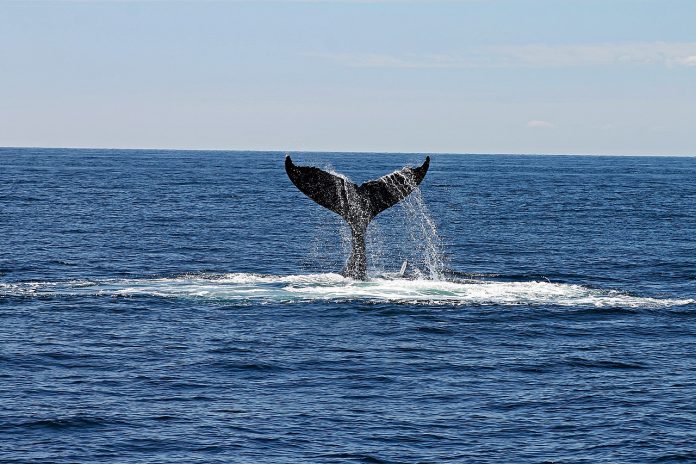
By Jim Brace-Thompson
Geoscientists have spent fortunes sailing about in ships equipped with sonar and air guns, laying out underwater grids of seismic detectors, and deploying fleets of buoys and drone submersibles. These fortunes have all been spent in the effort to understand interfaces at the bottom of the Earth’s oceans. These include interfaces between oceanic sediments, basaltic “basement rocks,” and the gabbroic lower crust beneath the basalt.
Now, it turns out, whales have been monitoring this just fine all along, thank you very much!
Specifically, fin whales. Václav M. Kuna (College of Earth, Ocean, and Atmospheric Sciences, Oregon State University) and John L. Náb?lek (Institute of Geophysics, Czech Republic) published an article in a recent issue of the journal Science in which they note how fin whale calls are detectable over great distances of open ocean and how such calls have been recorded by ocean-bottom seismic stations. Not only have the songs been captured and recorded, they apparently “contain signals reflected and refracted from crustal interfaces beneath the stations.”
Kuna and Náb?lek are hopeful that such powerful but decidedly low-tech fin whale vocalizations might be usefully employed by geoscientists to complement their expensive high-tech gizmos. Who says you need to spend a fortune? That is, until whale lawyers and whale accountants get wind of all this!
Author: Jim Brace-Thompson
 Jim began and oversees the AFMS Badge Program for kids, has been inducted into the National Rockhound & Lapidary Hall of Fame within their Education Category, and is the president-elect for the American Federation of Mineralogical Societies.
Jim began and oversees the AFMS Badge Program for kids, has been inducted into the National Rockhound & Lapidary Hall of Fame within their Education Category, and is the president-elect for the American Federation of Mineralogical Societies.
Contact him at jbraceth@roadrunner.com.
If you enjoyed what you’ve read here we invite you to consider signing up for the FREE Rock & Gem weekly newsletter. Learn more>>>
In addition, we invite you to consider subscribing to Rock & Gem magazine. The cost for a one-year U.S. subscription (12 issues) is $29.95. Learn more >>>














